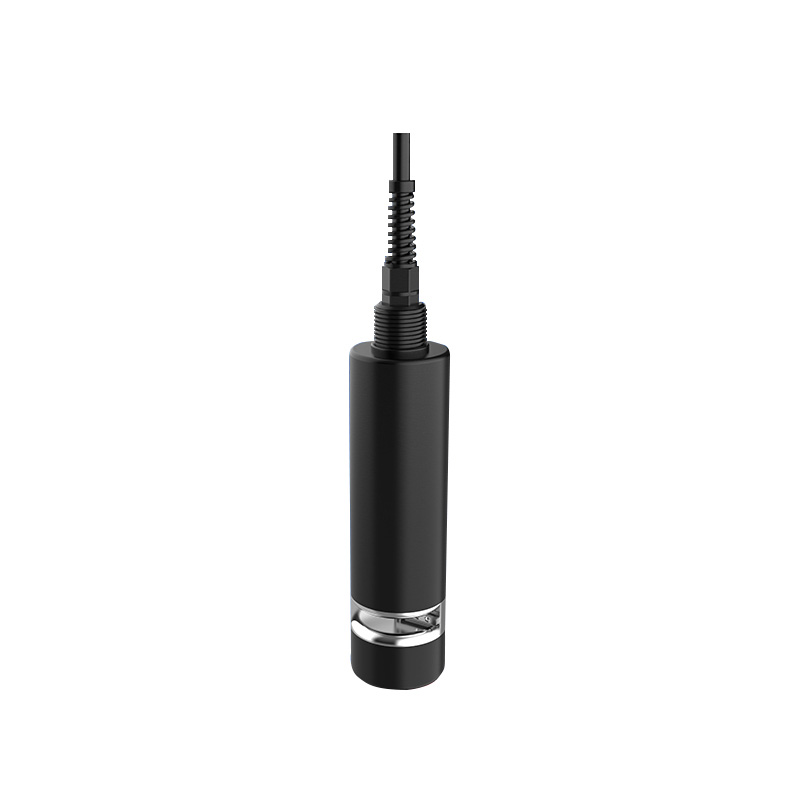Meteorological environment monitoring equipment supplier
Insist on doing high-precision customer favorite technology products

[ Overview of functions of water quality COD, turbidity, and temperature three-in-one transmitter ]: Chemical oxygen demand (COD) is an indicator of the content of reducing substances in water, and the reducing substances in water are mainly organic matter, so chemical oxygen demand (COD) is often used as an indicator to measure the content of organic matter in water. The greater the chemical oxygen demand (COD), the more serious the water body is polluted by organic matter. It can be widely used in water treatment, aquaculture, environmental monitoring and other industries.
[Water quality COD, turbidity, temperature three-in-one transmitter measurement elements]: COD value, turbidity value, temperature value.
[COD electrode description]:
①. This product is a device for measuring the chemical oxygen demand (COD) of a solution. It uses ultraviolet absorption method and does not require chemical reagents;
②. Internally integrated self-cleaning system to effectively prevent biological adhesion;
③. Built-in temperature transmitter with automatic temperature compensation function;
④ Use modulated light signals to reduce visible light interference;
⑤. Equipped with a turbidity measurement channel to effectively compensate for the impact of turbidity on COD measurement.
[COD electrode size]: length 247mm, outer diameter 50mm.
[COD electrode electrical interface]: The thread is NPT3/4 thread (6-point pipe thread, DN20), which is convenient for pipeline installation and sinking installation.
[COD electrode protection level]: IP68;
[COD electrode life]: The electrode service life is about 18 months. The specific service life is subject to the actual situation on site (the higher the concentration, the lower the service life).
[COD electrode maintenance]: The equipment itself generally does not require routine maintenance.
[Notes on the use of water quality COD, turbidity, and temperature three-in-one transmitter electrodes]:
①. The equipment contains sensitive optical components and electronic components. Ensure that the equipment is not subject to severe mechanical impact and avoid direct application of any mechanical stress to the equipment during use.
② When installing the equipment, try to avoid the cables being too tight or stressed, and avoid the equipment being exposed to sunlight.
③. Do not force the self-cleaning brush shaft to rotate, and regularly check whether the self-cleaning brush is working properly and whether it is damaged. .
④. Please do not touch the measurement window with your hands to avoid damage to the measurement window.
⑤ When measuring and calibrating equipment, avoid air bubbles adhering to the surface of the equipment, especially the measurement window. Regularly check the measurement window for attachments and scaling; it can be cleaned with tap water and wiped with a moist soft cloth. For some stubborn dirt, you can Add some household detergent to tap water to clean. Do not scratch the measurement window. If the measurement value is too high, too low, or the value continues to be unstable, please check whether the measurement window of the transmitter is clean. .
⑥. In principle, the equipment should be calibrated before each use. It is recommended to calibrate it every 3 months for long-term use. The calibration frequency should be appropriately adjusted according to different application conditions (the degree of dirt in the application site, the deposition of chemical substances, etc.).
⑦. If the self-cleaning device is used continuously for 18 months, it needs to be returned to the factory to replace the dynamic sealing device (the actual time can be appropriately increased or decreased according to the actual self-cleaning frequency used).
[Electrode Calibration]: Model 485 supports 485 command calibration.
[Electrode working temperature]: 0~40℃.
[Electrode withstand voltage]: <0.1MPa
[Response time]: ≤20sec
[Waterproof Level]: IP68
[Shell material]: Corrosion-resistant plastic, stainless steel
[Flow speed requirement]: <3m/s
[Power supply range]: 12-30VDC.
[Electrode cable length]: Default is 5m (10m, 15m, 20m can be customized).
[Complete machine power consumption]: 0.6W (normal); 1.8w (when the self-cleaning system is working)
[Communication interface]: RS485
[COD measurement range]: 0~500mg/L equiv.KHP
[COD measurement error]: ±5%FS equiv.KHP (25℃)
[COD error repeatability]: ±1%FS equiv.KHP (25℃)
[COD measurement resolution]: 0.1mg/L
[Turbidity measurement range]: 0~200NTU
[Turbidity measurement error]: ±5%FS (25℃)
[Turbidity measurement resolution]: 0.1NTU
[Temperature resolution]: 0.1℃
[Temperature error]: ±0.5℃
[COD common sense]: Under certain conditions, the amount of oxidant consumed to oxidize reducing substances in 1 liter of water sample is used as an indicator, and it is converted into the number of milligrams of oxygen required after all liters of water sample are oxidized. mg/L expressed. It reflects the degree of contamination of water by reducing substances. This indicator is also used as one of the comprehensive indicators of the relative content of organic matter.
[Meaning of COD]:
High levels of organic matter in circulating water systems can promote microbial growth. Therefore, regardless of desalination, boiler water or circulating water systems, the lower the COD, the better, but there is no unified limit indicator. In the circulating cooling water system, when COD (KMnO4 method) is >5mg/L, the water quality has begun to deteriorate.
In the drinking water standards, the chemical oxygen demand (COD) of Class I and II water is ≤15 mg/L, the chemical oxygen demand (COD) of Class III water is ≤20 mg/L, and the chemical oxygen demand (COD) of Class IV water is ≤ 30mg/L, Class V water chemical oxygen demand (COD) ≤ 40mg/L. The larger the value of COD, the more serious the pollution of the water body is.